Hands-On Powerline Networking: How Well (Or Not) Are Latest-Generation Devices Working?
by Brian Dipert on September 1, 2011 12:41 AM EST- Posted in
- Networking
- Powerline Adapters
- NetGear
(Cautious) good news, first; powerline networking technology has matured to an impressive degree from a reliability standpoint, at least with respect to my particular test bed, and across my limited test time. I've actually been running a mix of XAV5001s and four-port-hub-inclusive XAV5004s (in network node positions 2 and 3) since this spring, and they've handled power losses and other hiccups with aplomb, never requiring occasional (or not-so-occasional) manual unplug-and-replug sequences to revive their network connections as was the case with early offerings. The INT6400-based devices that they replaced were equally robust. And Sigma Designs' adapters worked without a hitch, too, at least in the several-day span that I used them.
Maybe it's a nitpick, and maybe under normal operating scenarios it might even be seen as a plus, but at least for testing purposes I wish that the XAV5001's Ethernet LED (the one on the right, with the adapter right-side up) would blink during active data transfers. As for the Powerline LED (the one in the middle), it's sometimes green:
sometimes yellow:
and sometimes red...even when installed in the exact same power plug!
Here's what the XAV5001 user guide says, "The Pick A Plug feature lets you pick the electrical outlet with the strongest link rate, indicated by the color displayed by the LED. Green: Link rate > 80 Mbps (Best). Amber: Link rate > 50 and < 80 Mbps (Better). Red: Link rate < 50 Mbps (Good)." But don't be alarmed (as I initially was) if an adapter's Power LED (the one on the left), normally green, turns amber:
That color change simply signifies that the adapter hasn't seen any network traffic passing through it for a while, and has therefore automatically transitioned into a power savings mode. Trust me, it'll wake up again once you 'ping' it.
The Sigma Designs/Motorola adapters exhibited similar behavior to their Qualcomm/Netgear peers, with the PLC Link LED sometimes green:
and sometimes red:
Again, this occurs even when used with the exact same power outlet plug, at different points in time. My email to Sigma Designs' PR contact requesting an explanation of the difference between 'green' and 'red' went unanswered, but I suspect 'red' also signifies a somehow-degraded powerline connection in this particular case.


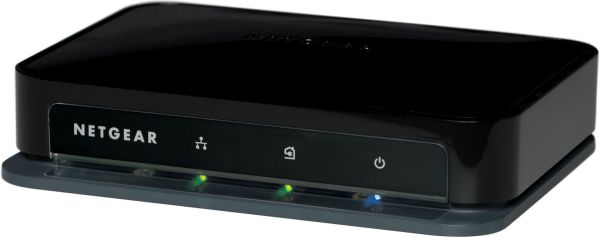
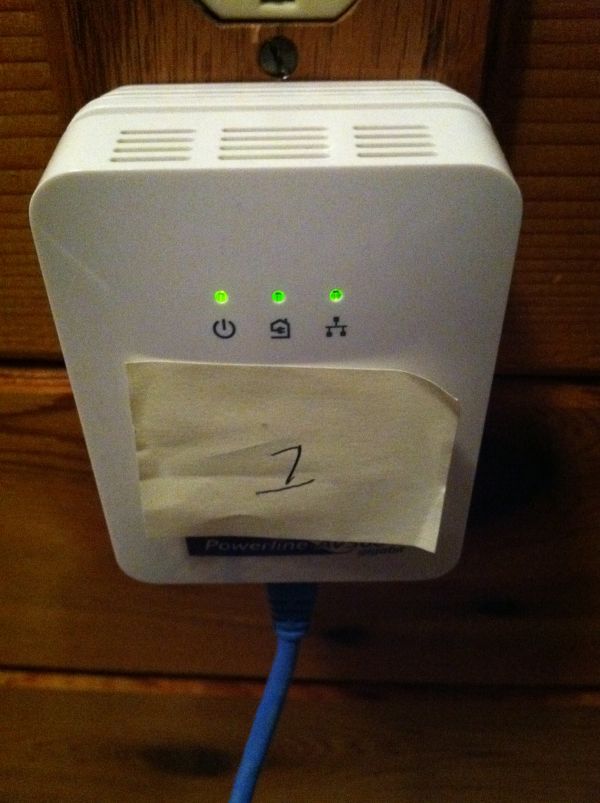

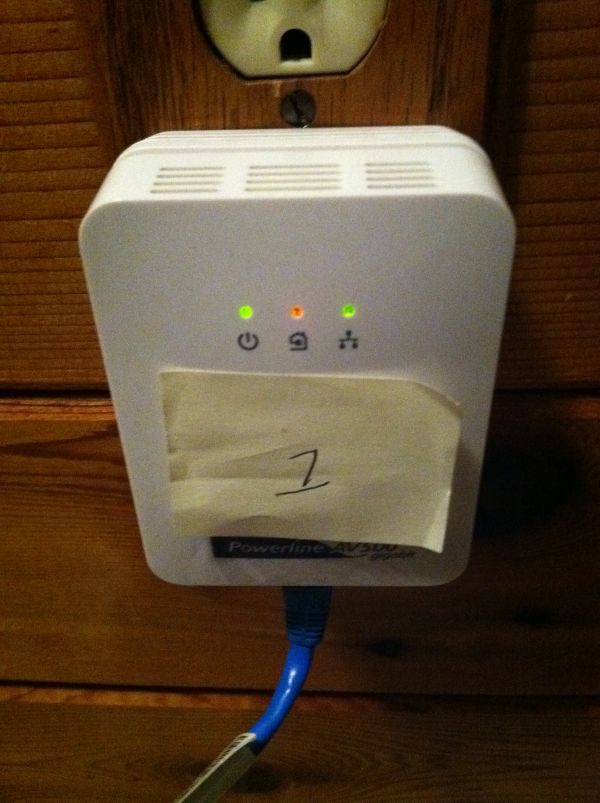
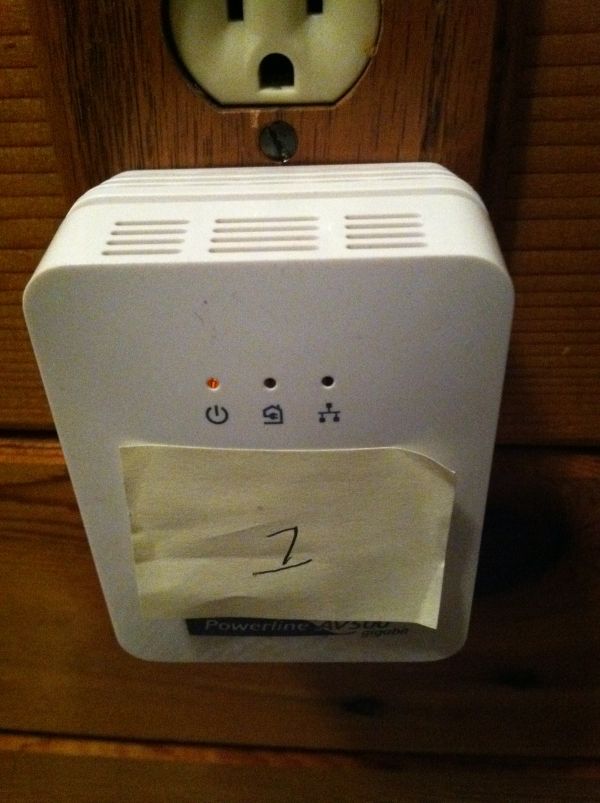
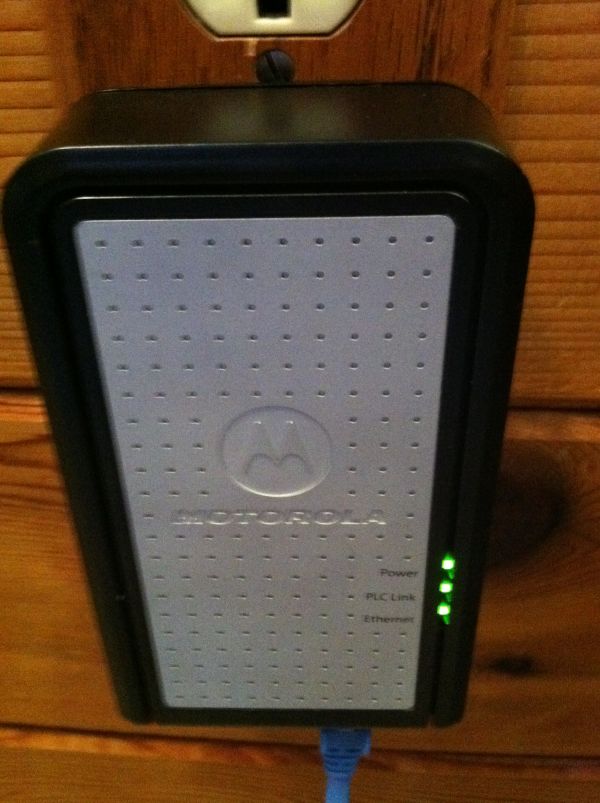
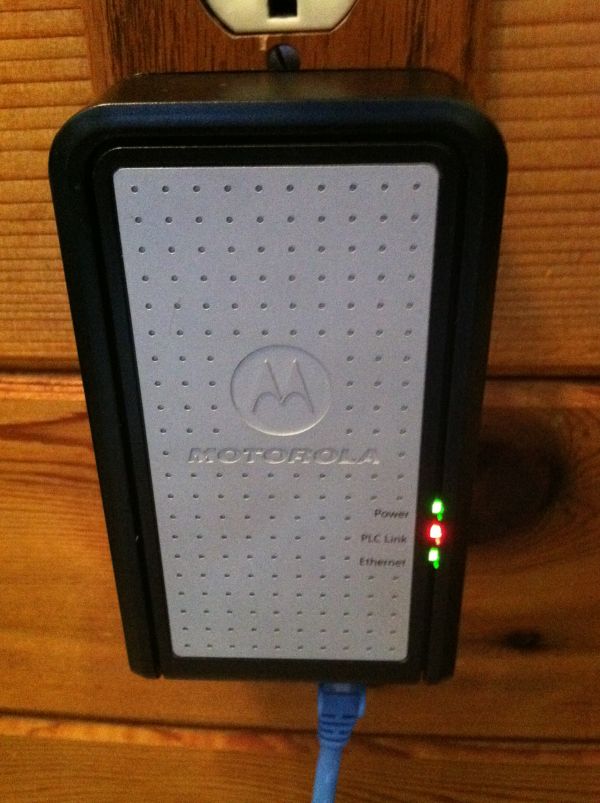








53 Comments
View All Comments
claytontullos - Thursday, September 1, 2011 - link
I have a netgear XAV1004 -200 system set up for my ps3.When the main unit is on the same breaker as the receiver I get around 35Mb/s. When I had the unit setup a few breakers away I received around 3.1Mb/s. Making the change as made all the difference in the world as I could not stream HD content before.
You really have to take these 200Mb claims as a joke... my gigabit switch tells me the main unit is connected to it at 100Mb/s... You'd expect if it was truly capable of 200Mbs/ speed it would connect at the gigabit level.
bersl2 - Thursday, September 1, 2011 - link
Maybe it only implements Fast Ethernet, and marketing is adding Tx and Rx bandwidth together.fireboy92k - Thursday, September 1, 2011 - link
It's 100 Mbps full duplex (just like fast ethernet), hence the claim of 200 Mbps as you stat.See answer 10 at http://support.netgear.com/app/answers/detail/a_id...
bdipert - Thursday, September 1, 2011 - link
Thanks for writing, claytontullos. The '200 Mbps' (or for that matter, '500 Mbps') claims of the powerline folks are analogous to the '54 Mbps' and above claims of the Wi-Fi folks...or for that matter the '100 Mbps' and '1 Gbps' claims of the wired Ethernet folks. The peak theoretical PHY rate (or even close to it) is rarely if ever achievable in real-life usage environments, due to protocol overhead, distance- and otherwise-derived attenuation, destructive interference from other 'transmitters' in the same frequency bands, etc...p.s...'200 Mbps' powerline networking adapters usually if not always contain 100 Mbps wired Ethernet transceivers. 'Nuff said ;-) Note, however, that the XAV5001 '500 Mbps' adapters contain GbE transceivers...therefore making it important that I mated them to Endpoint systems (my MacBook and MacBook Pro) which ALSO have GbE capabilities
JarredWalton - Thursday, September 1, 2011 - link
I wouldn't lump the 100Mbps and 1Gbps Ethernet stuff in with the WiFi and Powerline networking. I routinely hit >100MBps transfer rates on my GbE setup, and basically peg any 100Mbps connections at 98% of their maximum throughput (around 12.3MBps). And that's using HDDs. Transferring files from an SSD-based system to another SSD over GbE, I can hit around 120MBps. Fastest I've ever managed on WiFi is around 30MBps with a "450Mbps" connection -- or around 53% of the theoretical rate.Per Hansson - Thursday, September 1, 2011 - link
Yea, I agree, don't talk down Ethernet like thatI have a 100mbps internet connection and I can routinely hit 12MB/sec transfer speeds...
I've also used those "Gigabit" Powerline networking devices and they managed an astonishing 5mbps throughput, while at the same time killing my FM reception on my radio, even the cars radio was interferred with when I tried it out to my garage (throughput was then ca 1mbps, somewhat shy of the 1000mbps claim...)
bdipert - Thursday, September 1, 2011 - link
Ok, ok, ok...so maybe I was a little harsh on wired Ethernet...;-) In this regard, a compare-and-contrast is perhaps of some value. Wired Ethernet is a media specifically designed to carry network packets. The AC power grid, on the other hand, or the atmosphere, in both cases with who-knows-what attenuators and spectrum contenders in-between transmitter and receiver...And even with wired Ethernet, protocol overhead (TCP's handshaking scheme, for example...this is why I REALY wished I could have gotten some meaningful UDP data in this study) will retard the effective transfer rate, even if the media and the transceivers on either end are up to the task. And speaking of the receiver, a slow NAS (for example) does a good job of putting the brakes on things, too...
el1x - Thursday, September 1, 2011 - link
As far as i am aware its 100Mbps Full Duplex and the marketing states the Tx & Rx together as bersl2 has said.Any chance of looking at the NetComm range of powerline? The NP202, 203, 204 & 206.
I have a set of the NP204's not only are they a solid reliable unit they have AC passthrough so i don't lose a power point.
jigglywiggly - Thursday, September 1, 2011 - link
The problem with this is that it isn't that much better than wifi, lol.akedia - Thursday, September 1, 2011 - link
My apartment is long, narrow, and fully of radiators. It's also over a century old, and power outlets are distressingly sparse and often tucked half-behind the radiators. Right now I have to have coax strung across half my apartment to get from the bizarre place the cable for my internet connection enters the wall to the only outlet in a good enough position to have my WiFi adapter plugged in and get a signal that's still only serviceable throughout half of my apartment. In a perfect environment, yeah, powerline and WiFi are comparable in performance. In reality, though, there are real advantages and disadvantages to each that can dramatically affect their relative utility. Lots of radiators... only one breaker.